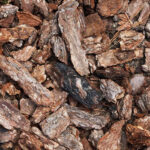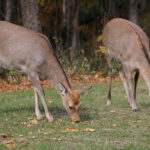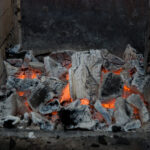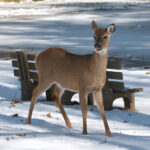Coyotes aren’t like apes and bears – they don’t have flexible limbs that can wrap around tree trunks, nor powerful claws that can dig into the bark to pull themselves up.
However, they are more agile than the average dog and can perform physical feats that would surprise most people.
But can coyotes climb trees?
Table of Contents
- Can Coyotes Climb Trees?
- Why Would A Coyote Climb A Tree?
- Will A Coyote Climb A Tree To Get Into A Yard?
- How High Can Coyotes Jump?
- Can Coyotes Climb Fences And Walls?
- Do Coyotes Use Trees To Hunt?
- What Other Physical Abilities Do Coyotes Have?
- Conclusion
- Related Posts
Can Coyotes Climb Trees?
Coyotes are not the best tree climbers, but they can climb some small ones. If the tree has many low branches or a slanted trunk, it is more likely that a coyote will be able to climb onto it. They have light and nimble bodies that make it easy to jump and balance on thin branches.
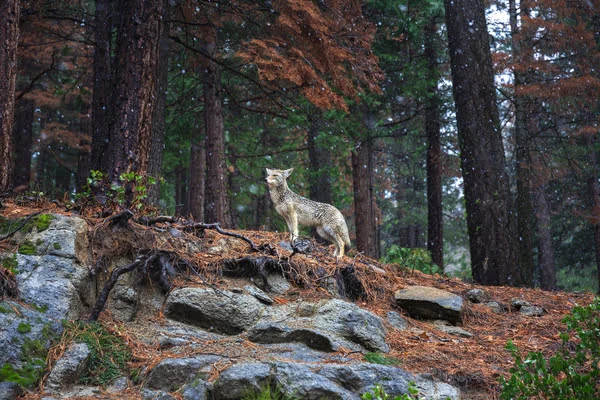
However, their bodies are not built to climb trees easily, and they don’t do it very often. If something tasty is sitting in the tree, it might be worth the effort to jump into the tree to reach it.
Why Would A Coyote Climb A Tree?
Coyotes will climb trees for food. Some coyotes have been seen climbing trees to get the fruit growing on them, such as crabapples and persimmons, which supplement their diet in winter when other food sources are scarce.
Here’s a video of a coyote looking for a snack while clambering around branches in a tree. Coyotes can look comfortable, even if a little clumsy at times.
But it’s not a big tree. Small, dense branches that are low to the ground make it easy for the coyote to climb in it.
Coyotes may be more desperate and go to extra lengths to get food if there is not a lot available, so it would be more likely to see a coyote climb a tree in areas where prey is limited.
In Alberta, an urban resident spotted a coyote climb a tree in her backyard in winter to eat its berries.
Keep in mind that the trees they most often climb are fruit trees, which are generally small and easy to climb onto.
Will A Coyote Climb A Tree To Get Into A Yard?
Although the two videos linked above show a coyote in a tree in someone’s backyard, they do not generally use trees as access points.
They are mostly motivated to climb trees if they can see fruit in them.
If the tree is small enough, and its branches lead to some chickens on the other side of a fence, then they may take the opportunity to climb it. But they are more likely to try to jump over the fence itself.
Coyotes are not as good at climbing trees as bears or mountain lions. They do not have the strength, claw sharpness, and limb orientation that are required to scale up trees as a bear or feline can. While you might see a bear or mountain lion hanging out high up in a large tree, it’s very unlikely you’ll see a coyote there.
But if there are some branches that are low enough, or the trunk is slanted, the coyote may be able to leap up onto the tree since they can jump impressively high.
How High Can Coyotes Jump?
Coyotes can jump 3 feet into the air, but thanks to their agility and strong hind legs, they can bounce against surfaces and leap over fences much higher than that.
One study found that coyotes had trouble jumping over fences that were 6 feet tall. They could easily jump fences under 5 feet.
Meanwhile, some sources have recorded coyotes climbing over fences 8 feet tall, but these fences had holes that helped the coyotes climb.
If you’re trying to keep coyotes out, it’s also important that these fences go deep into the ground (at least 1 to 2 feet deep). Coyotes are great diggers – if there’s a way underneath the fences, they’ll dig under and get across.
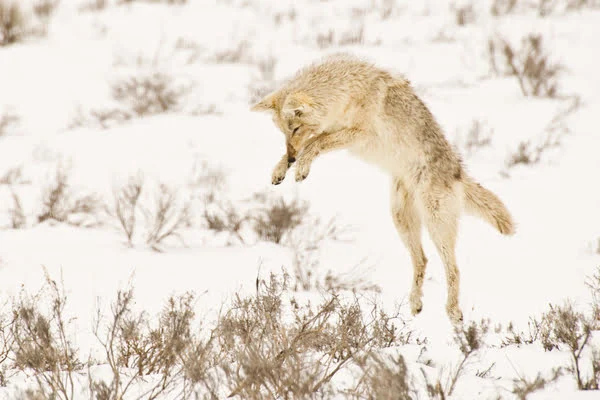
Can Coyotes Climb Fences And Walls?
Coyotes can easily jump over the average backyard fence. If it’s too tall to jump over, they might be able to climb up it depending on the fence material or the wall texture.
Smooth surfaces are harder for coyotes to climb up. If there are any grooves or slants, the coyote can use them as footholds to climb.
For example, chain link fences provide holes that coyotes can use to push themselves up.
If you want to prevent coyotes from breaking into your backyard, you can install coyote rollers on the tops of fences.
These are cylindrical bars that roll when touched. When a coyote’s front paws land on top of the fence, they will spin the roller and fall down. Barbed wire can also do the trick.
Related: Will Coyotes Attack Humans In A Tent?
Do Coyotes Use Trees To Hunt?
Native to the western plains, coyotes are used to roaming and hunting in open fields. They do not generally use trees to hunt, but they can use them for protection against potential predators.
Near urban areas or rural areas where coyote hunting is popular, coyotes often stay close to wooded places that keep them hidden from humans.
They can use trees to help hide, but they aren’t good enough at climbing to use them as an escape – predators like mountain lions would easily outcompete them on a tree.
And they can’t chase prey, like squirrels, up trees. Even gray foxes can escape coyotes by climbing trees.
With their small cat-like bodies, foxes are the canines most suited to climbing trees.
What Other Physical Abilities Do Coyotes Have?
Besides leaping up fences and small trees, coyotes can also squeeze through small spaces. That’s why it’s important to look for any gaps in fences if you’re trying to keep coyotes out.
They can pass through spaces that are only 4 inches wide. A small coyote could probably even pass through a 3-inch gap.
Conclusion
Coyotes are opportunistic scavengers, and so if they see some tasty fruit on a tree, they’ll probably climb the tree if its branches are low enough to jump onto.
But they are not natural climbers, and can’t climb a large tree trunk with limited branches.
So there’s no need to worry about a coyote scaling a big tree to get into your yard – an easier route for them would be leaping over or squeezing through the fence.

